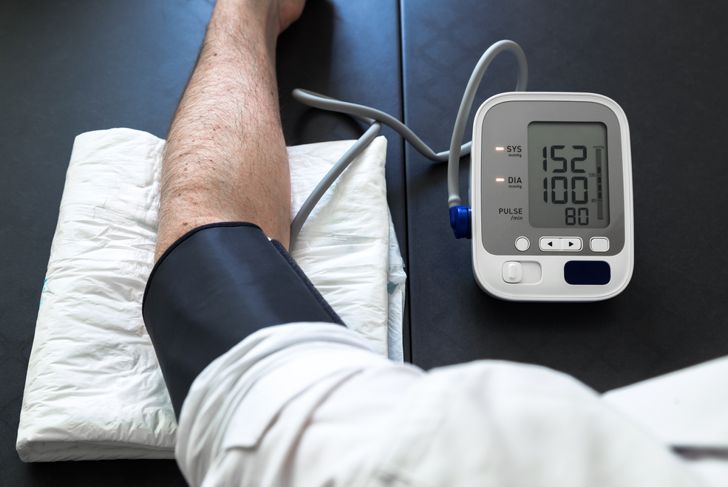When a person frequently or continuously experiences a rise in blood pressure whenever they enter a clinical setting, they may have white coat syndrome (WCS). Although it is a common phenomenon, researchers say the condition should not be underestimated due to the increased cardiovascular risks that accompany any type of hypertension.
Anxiety and WCS
Researchers believe that anxiety may play a role in WCS. Fear responses in health care settings are not unusual and stem from a variety of reasons including the possibility of a serious diagnosis or negative outcome. Elevated blood pressure readings that occur only in a medical setting are not enough to warrant a diagnosis of sustained hypertension. However, people who experience blood pressure rises when visiting a healthcare provider usually experience increased levels when they feel stressed in other situations as well.
Prevalence of WCS
Studies show that between 15 and 50% of individuals who have mildly elevated blood pressure levels experience white coat syndrome. Females are more likely to develop the condition, starting in middle age. Some studies indicate that WCS is an early sign of hypertension; however, research on its long-term effects is scarce.
Possible Causes
Physicians once thought that stress surrounding doctor’s visits caused white coat syndrome. If the patient left the clinical setting and their blood pressure decreased, the experts believed the rise in blood pressure to be a situational issue, not an ongoing one. While heightened anxiety levels can lead to an increase in blood pressure, the levels should decrease once the individual is no longer feeling anxious.However, over time, continual blood pressure increases can damage the heart and lead to more serious complications. Anxious people are more likely to smoke, overeat, or drink alcoholic beverages, all of which can raise blood pressure.
Subgroups of WCS
Researchers have identified three specific subgroups of WCS. Each has unique clinical conditions.
- White coat hypertension (WCH): Often misinterpreted as white coat effect or WCE. Individuals present high blood pressure levels in a medical office setting, but normal ambulatory and at-home readings.
- White coat effect (WCE): People with treated hypertension have elevated blood pressure levels when a physician or healthcare professional is present.
- Masked hypertension (MH): An inverse condition where the individual has healthy blood pressure levels in the doctor’s office, but high levels outside of the office.
WCS in Children and Adolescents
Pediatric studies show that children and adolescents also experience WCS. About half of those evaluated for elevated blood pressures had higher readings in the clinical setting and fell within a healthy range outside of the doctor’s office. Although children with obesity and some ethnic groups are at higher risk of developing hypertension at some point, children who experience elevated levels only in a medical setting were not likely to have long-term adverse effects.
Cardiovascular Issues and Other Risks
Without treatment, white coat syndrome can lead to a higher risk of cardiovascular issues and mortality, according to a 2019 study. Another study in 2015 found that people with WCS had an increased risk of stroke, heart failure, and heart attacks. Untreated individuals exhibiting signs of WCS are 36% more likely to develop other chronic illnesses in addition to cardiovascular symptoms.
Relaxation Techniques in Clinical Settings
Anxiety can lead to temporary spikes in blood pressure. In addition to the doctor’s office itself, busy medical waiting rooms can trigger anxieties for people with WCS. Asking to wait in a quieter area could relieve some of the anxiety. Relaxing for a few moments before taking the blood pressure allows for a more accurate reading. Slow, deep breathing also helps.People with WCS often find relaxation through casual conversation, while others divert their thoughts with a favorite song, poem, or book passage.
Diagnosis
The physician may ask the individual to wear a blood pressure monitor for 24 hours. This provides blood pressure data not only during the individual’s usual daytime routine but also while they are sleeping. Some doctors also ask patients to take regular blood pressure readings and record them prior to the follow-up appointment.
Monitoring and Treatment
Doctors recommend regular out-of-office blood pressure monitoring to aid in the diagnosis of white coat syndrome and manage and be aware of ongoing hypertension. The American College of Cardiology defines healthy blood pressure as 120/80 or lower. Physicians consider any blood pressure at 130/80 or above to be high blood pressure. Doctors do not usually prescribe medication unless they confirm a diagnosis of hypertension.
Prognosis
Research data indicates that most people with white coat syndrome have a more serious cardiovascular prognosis than individuals with healthy blood pressures. However, they have a better prognosis than those with sustained hypertension. Physicians only recommend ongoing medical therapy for people with WCS if they have high blood pressure in other settings than a medical clinic or a high risk of cardiovascular issues and organ damage. Regular follow-ups and ongoing assessments to evaluate blood pressure can help keep risk factors in check.

 Home
Home Health
Health Diet & Nutrition
Diet & Nutrition Living Well
Living Well More
More




















